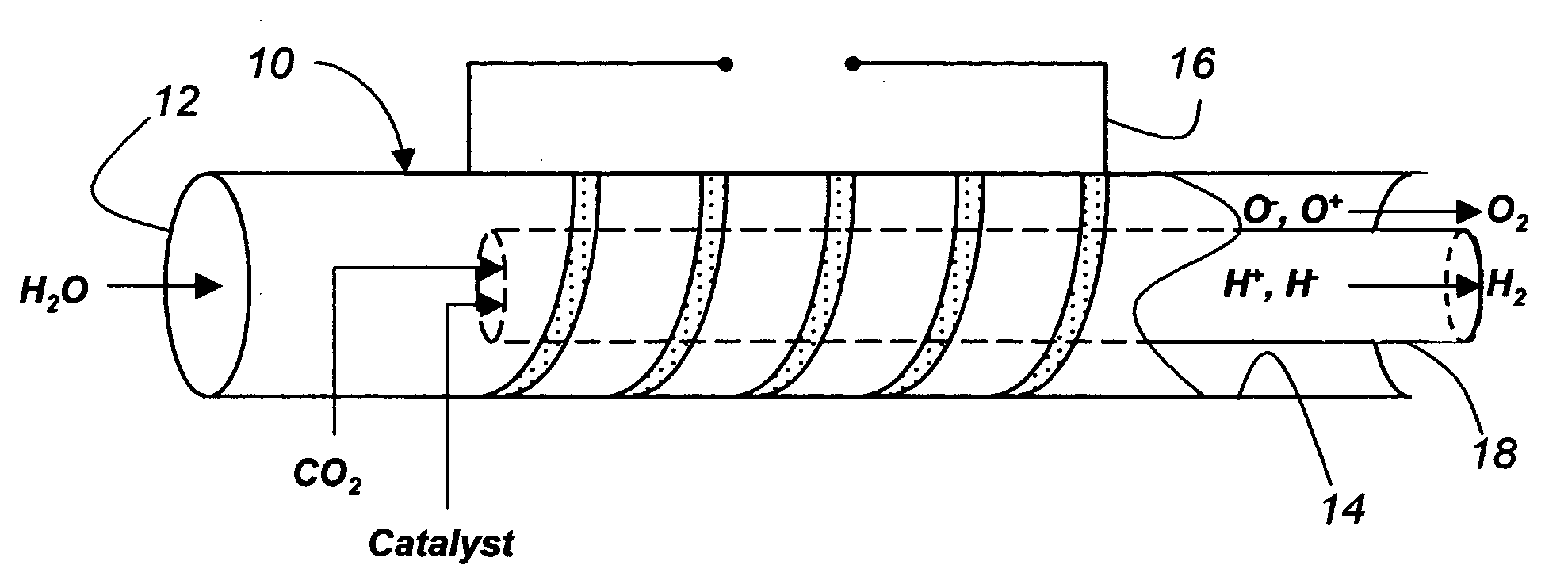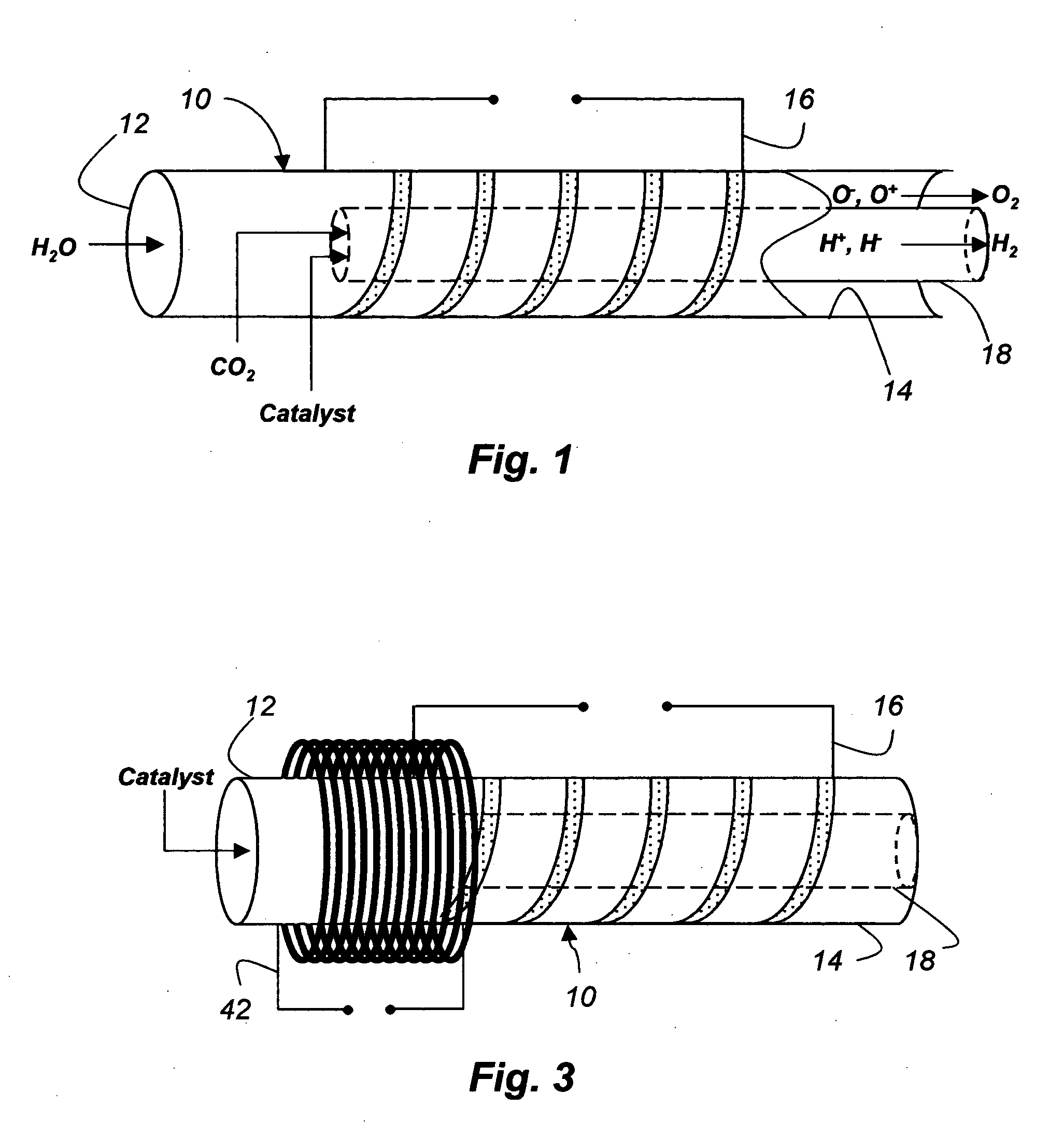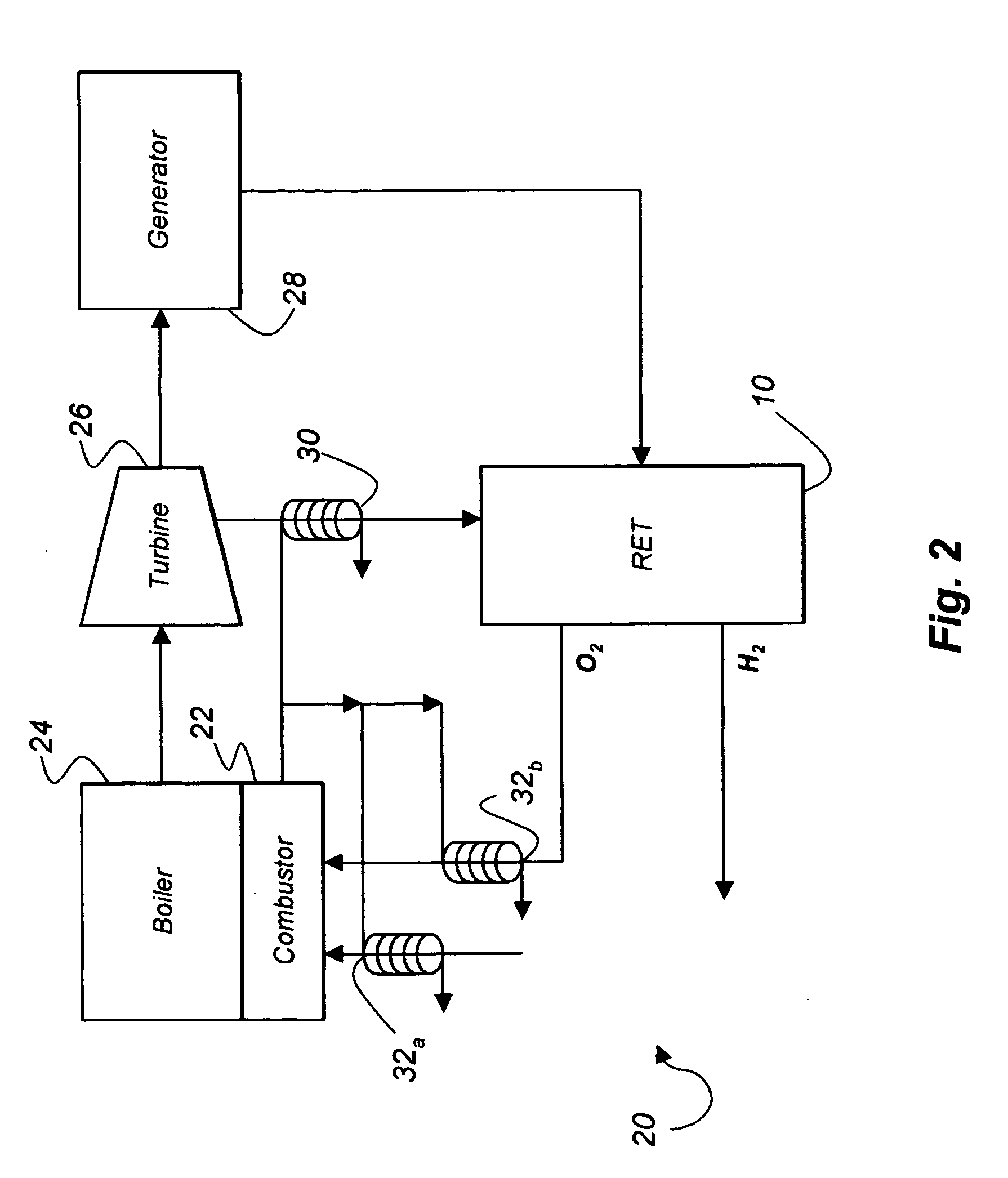Radiant energy dissociation of molecular water into molecular hydrogen
a technology of energy dissociation and molecular hydrogen, which is applied in the direction of energy input, instruments, nitrogen oxides/oxyacids, etc., can solve the problems of severe economic contraction of global output of goods and services, oil price increase, and oil production and consumption demand continue to escala
- Summary
- Abstract
- Description
- Claims
- Application Information
AI Technical Summary
Benefits of technology
Problems solved by technology
Method used
Image
Examples
Embodiment Construction
[0034] The above referenced application, incorporated herein by reference, discloses several variations of radiant energy transfer reactors that may be used to practice the present invention. It is to be initially understood that the construction of any such reactor is not to be limited to the specific examples shown therein, but that any reactor that transfers energy to molecular water, as described in greater detail hereinbelow, is contemplated by the scope of the present invention. Accordingly, the following description is not to be deemed limited to the exemplary reactor herein described.
[0035] With reference to FIG. 1, there is shown a radiant energy transfer reactor 10. The reactor 10 includes a first portion 12 adapted to receive water molecules, a second portion 14 at which the constituent components of the dissociated water molecules may be further separated and removed, a coil 16 to which electrical energy is applied to develop an electromagnetic field within the reactor ...
PUM
| Property | Measurement | Unit |
|---|---|---|
| molecular bonding energy | aaaaa | aaaaa |
| frequency | aaaaa | aaaaa |
| mode frequency | aaaaa | aaaaa |
Abstract
Description
Claims
Application Information
 Login to View More
Login to View More - R&D
- Intellectual Property
- Life Sciences
- Materials
- Tech Scout
- Unparalleled Data Quality
- Higher Quality Content
- 60% Fewer Hallucinations
Browse by: Latest US Patents, China's latest patents, Technical Efficacy Thesaurus, Application Domain, Technology Topic, Popular Technical Reports.
© 2025 PatSnap. All rights reserved.Legal|Privacy policy|Modern Slavery Act Transparency Statement|Sitemap|About US| Contact US: help@patsnap.com



